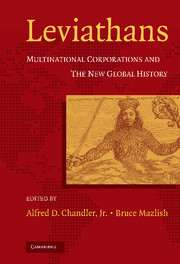Conclusion
Published online by Cambridge University Press: 17 August 2009
Summary
A long stretch of time exists between the first of what may be called multinational enterprises, such as the East India Co. and the Hudson Bay Co. of the seventeenth century, and the multinational corporations (MNCs) of today that we are calling the new Leviathans. In the case, for example, of the East India Co., it was a government unto itself, exercising state functions as well as economic ones in the course of its existence. Such enterprises have changed shape, grown enormously in number, and shifted from monopoly concerns to market-driven entities.
What is constant is the presence of change whose pace has rapidly increased in the last half century or more. It is not only the MNCs that have changed ceaselessly but the context in which they now operate. That context is a process of globalization that has taken on dimensions hitherto unknown. One such dimension is consciousness. The coining of the term “globalization” in the 1960s and 1970s is itself testimony to the newness of the new globalization.
We have tried, in the Introduction to this volume, to give some idea of how this new globalization can be studied. That is what New Global History is about. It is made up of many parts that must be brought into conjunction with one another. The MNC, we have argued, is one such part. It plays a major role in the developing process of globalization and can best be studied in the larger context it has helped create.
- Type
- Chapter
- Information
- LeviathansMultinational Corporations and the New Global History, pp. 237 - 242Publisher: Cambridge University PressPrint publication year: 2005

